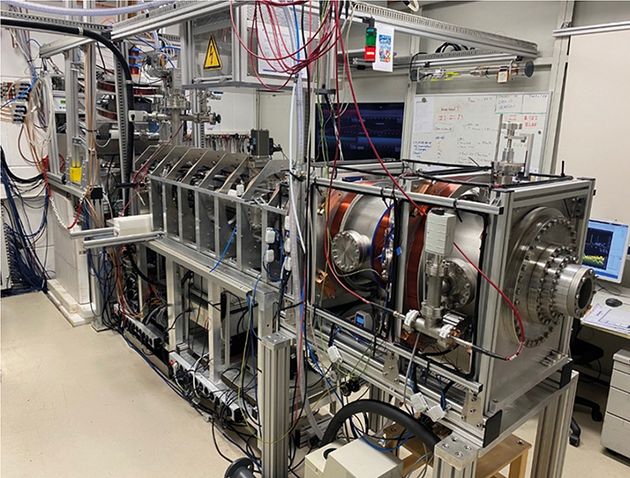User report – Monochromatic light sources for defect characterisation
Introduction
The Helmholtz-Zentrum Dresden-Rossendorf (HZDR) operates internationally renowned large-scale research facilities and serves as a coordinator and partner in numerous scientific collaborations and projects. A significant portion of the scientific infrastructure at HZDR is made available to external researchers from academia and industry.
The ELBE Center for High-Power Radiation Sources, within this framework, provides a highly sought-after international infrastructure for utilizing various types of secondary beams – both electromagnetic radiation in the form of coherent infrared radiation with very high field strengths, and particles such as neutrons and positrons. The positron beam generated through pair production with bremsstrahlung from the superconducting electron accelerator ELBE (short for Electron Linac with high Brilliance and low Emittance), referred to as pELBE, is used for characterizing atomic defects in thin layers up to 1 µm in thickness, with energies ranging from 0.5 keV to 30 keV.
Positron Annihilation Lifetime Spectroscopy
When positrons, the antiparticles of electrons, are implanted in matter, they naturally annihilate within short periods with the electrons present in that location. However, the average lifetime of positrons is strongly influenced by the local electron density at the annihilation site and can range from a few 10 ps for single vacancies in metals to several 100 ns during the formation of positronium, an analog state of the hydrogen atom. The goal is to characterize atomic defects such as single, multiple, or cluster vacancies, as well as dislocations and grain boundaries, in a depth-dependent manner through precise determination of positron lifetimes in matter. The method achieves sensitivity in the ppm range due to the electrostatically effective attraction of vacancies (the positive charge of atomic nuclei is missing here).
Manipulation of the Charge State of Defects
Defects, especially in semiconductors, are not always in a negatively charged state. Monochromatic light can be used to selectively influence this charge state. In the case of pELBE, an intense Xe arc lamp (Bentham B-IL75E-P) with a wavelength range of 200 nm to 1500 nm is employed to selectively introduce electrons into intraband states, making defects visible to positrons. In addition to semiconductors, the charging of defect states in AlN and photochromic oxyhydrides for applications in glass coating has also been investigated.
A monochromator (Quantum-Design MSH-300) with fiber optics is used to focus the light source on the sample material in an ultra-high vacuum system. The controllability of the monochromator allows integration into automated data acquisition for in-situ measurements of positron annihilation lifetimes.
Contact
- Dr. Andreas Wagner
- Institute of Radiation Physics, Helmholtz-Zentrum
- Dresden-Rossendorf
- Bautzner Landstr. 400, 01328 Dresden
- Tel.: 0351 260 3261
- Email: a.wagner@hzdr.de
- https://www.hzdr.de/db/Cms?pNid=3225%20




